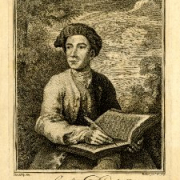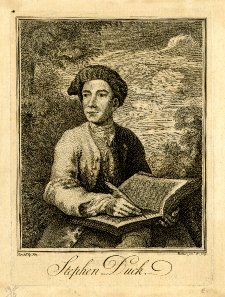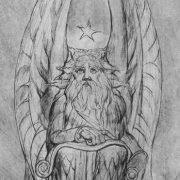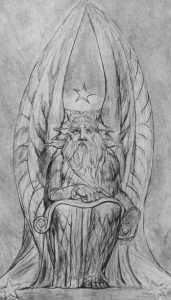MONTHLY BLOG 172, CAN YOU NAME FIVE STRIKING POEMS ABOUT TIME??
If citing, please kindly acknowledge copyright © Penelope J. Corfield (2025)

|
172.1 Time’s Wingèd Chariot |
In contrast to the dearth of good jokes about Time, there are very many great poems on that theme.1 Here, however, I’ve chosen just five.
Firstly, Andrew Marvell’s appeal to ‘To His Coy Mistress’ (published posthumously in 1681)2 is a magnificent example of the human awareness of life in ever-fleeting Time. The poet is keenly impatient to get his lover into bed with him; but she does not share his haste. So he reproaches her, gently enough but pointedly:
‘Had we but world enough and Time,
This coyness, lady, were no crime ….’
He explains that ideally he would take much longer to woo her – and to dwell in turn on all the beauties of her body and her heart. Yet he is vividly aware of the passing of Time. Or as he puts it, magnificently:
But at my back I always hear
Time’s wingèd chariot hurrying near;
And yonder all before us lie
Deserts of vast eternity. …’
Whether trying to win a race against the clock is the best appeal to get a coy lover into bed remains uncertain. The outcome, however, makes for a great poem, which has been multiply quoted and referenced. So Marvell did win a resonant through-Time fame, even though history does not record whether this poem actually melted the heart of his coy lover.
Another mighty poet of Time is William Shakespeare.3 His sonnets refer to temporality in tones ranging from acceptance to pulsating anger. In Sonnet 16, he urges the dedicatee to ‘Make war upon this bloody tyrant, Time’. Elsewhere, too, he refers to the dark power of ‘Devouring Time’ (Sonnet 19) or the harsh blows inflicted by ‘Time’s injurious hand’ (Sonnet 63) or by Time’s ‘scythe and crooked knife’ (Sonnet 100). Yet at other moments, Shakespeare stresses instead the speedy passage of ‘swift-footed Time’ (also Sonnet 19) and the unpredictability of ‘Time’s fickle glass’ (Sonnet 126). All variants being undeniably evocative.
Yet my favourite is Sonnet 116. It’s rightly famous and much quoted, because it applauds the power of Love to outlast even mighty Time. It starts briskly: ‘Let me not to the marriage of true minds/ Admit impediments’. And continues with a strong affirmation: ‘Love is not love/ Which alters when it Alteration finds’. No! Real human affection will triumph against all odds:
Love’s not Time’s fool, though rosy lips and cheeks
Within his bending sickle’s compass come.
Love alters not within his brief hours and weeks
But bears it out, even to the edge of doom’.
And, musing on tensions between the swift passing of Time and the eternity of Time, here’s my third choice. It’s the Ode to a Nightingale (1819) by John Keats.4 The poet is sadly downcast by ‘the weariness, the fever and the fret’ of daily living. He sits outside on a dark summer night, thinking of death whilst listening to the song of the nightingale:
Now more than ever seems it rich to die,
To cease upon the midnight with no pain,
While thou art pouring forth thy soul abroad
In such an ecstasy!
Nonetheless, the poet’s thoughts turn also to the eternal powers of nature and of beauty. Some things can last through Time:
Thou wast not born for death, immortal Bird!
No hungry generations tread thee down;
The voice I hear this passing night was heard
In ancient days by emperor and clown …
Thinking seriously about Time can thus induce thoughts of death – and antidotes to death. The fourth work cited here is not a charming poem – and not intended as such. It’s entitled Howl (1956) and that’s what it does. Alan Ginsberg5 starts bleakly: ‘I saw the best minds of my generation destroyed by madness, starving hysterical naked/’ … and he continues in that vein as he recalls their collective lives in Time. The poem’s long, long sentences, set as blank verse, reek of self-loathing allied to despair about his entre peer group, known as the ‘Beat Generation’.
Only occasionally does a wry humour shine through. Consider Ginsberg’s verdict on his friends’ disdain for the passing of Time. They ‘threw their watches off the roof to cast their ballot for Eternity outside of Time & alarm clocks fell on their heads every day for the next decade’.
But Ginsberg was sure that he and his peer group were seeking something greater than a chaotic lifestyle. Hence they ‘dreamt and made incarnate gaps in Time & Space through images juxtaposed, and trapped the archangel of the soul between two visual images and joined the elemental verbs and set the noun and dash of consciousness together …’. Ginsberg’s personal solution was to embrace Buddhism, though not all did so.
Time’s travails can obviously lead to multiple outcomes. But it’s impossible not to be involved with Time. My fifth and last choice – ‘quick now, here, now always!’ – is The Four Quartets (1943), an amalgamation of four poems by the twentieth-century’s great mystic poet of temporality, T.S. Eliot.6 His message is often enigmatic. He loves a paradox. So one opaque comment declares the outcome to be: ‘Never and always!’ (Verse 3 Little Giddings).
Above all, therefore, Time is not divided into separate segments, Eliot argues. The past and the present are not locked away in separate compartments. They live in humanity’s through-Time consciousness. Hence he muses that:
What might have been and what has been
Point to one end, which is always present.
Consciousness reaches beyond the immediate moment. Yet, simultaneously, consciousness only operates in the here-and-now. So here is another paradox: ‘Only through Time, Time is conquered’. And living within the inexorable power of Time is painful, not restful. After all, ‘… this thing is sure/ That Time is no healer’ ….
Eliot thus expresses a dogged acceptance of the painful limitations of human existence. It’s a tough message. But people must trudge onwards. Not everyone would put the stoic message in these terms. Yet there’s no doubt that Eliot’s philosophy makes for highly evocative poetry:
Time present and Time past
Are both perhaps present in Time future,
And Time future contained in Time past.
If all Time is eternally present All Time is unredeemable.
ENDNOTES:
1 See PJC BLOG/ 171 (March 2025) for the lack of great jokes about Time. And for wider context, see PJC, Time-Space: We Are All in It Together (London, 205).
2 Andrew Marvell (1621-78)’s most famous poem, which was published posthumously in 1681, may well have been written many years earlier. in the early 1650s: see https://en.wikipedia.org/wiki/To_His_Coy_Mistress (viewed 17 March 2025).
3 For William Shakespeare (1564-1616) and temporality, see F. Turner, Shakespeare and the Nature of Time: Moral and Philosophical Themes in Some Plays and Poems (Oxford, 1971).
4 For John Keats (1795-1821), who did indeed die young, see variously R. Gittings, The Keats’ Inheritance (London, 1964); S. Coote, John Keats: A Life (London, 1995); and J.E. Walsh, Darkling, I Listen: The Last Days and Death of John Keats (New York, 1999).
5 Alan Ginsberg (1926-97), Howl, written c. 1954-5 and first published in Howl and Other Poems (1956), after which the publisher was arrested and charged with obscenity. His subsequent acquittal greatly boosted sales: see https://en.wikipedia.org/wiki/Howl_(poem) (viewed 18 March 2025). For context, see too B. Miles, Ginsberg: A Biography (New York & London, 1989).
6 For T.S. Eliot (1888-1965), see variously P. Ackroyd, T,S. Eliot: A Life (1984); L. Gordon, T.S. Eliot: An Imperfect Life (1998); and K.P. Kramer, Redeeming Time: T.S. Eliot’s Four Quartets (Lanham, Md, 2007).
For further discussion, see Twitter
To read other discussion-points, please click here
To download Monthly Blog 172 please click here




 This BLOG resumes the theme of links between the Georgian era and the present.1 To do that, it takes one remarkable case-history, that of the Wiltshire poet, Stephen Duck (c.1705-56). [Yes, that was his real name] He was the son of an impoverished agricultural labourer. It’s likely that both his parents were illiterate. Yet Stephen Duck not only grew to gain poetic fame during his relatively short life but has been honoured ever since by an annual Duck Feast, held in his home village of Charlton, near Pewsey in Wiltshire.2
This BLOG resumes the theme of links between the Georgian era and the present.1 To do that, it takes one remarkable case-history, that of the Wiltshire poet, Stephen Duck (c.1705-56). [Yes, that was his real name] He was the son of an impoverished agricultural labourer. It’s likely that both his parents were illiterate. Yet Stephen Duck not only grew to gain poetic fame during his relatively short life but has been honoured ever since by an annual Duck Feast, held in his home village of Charlton, near Pewsey in Wiltshire.2 




